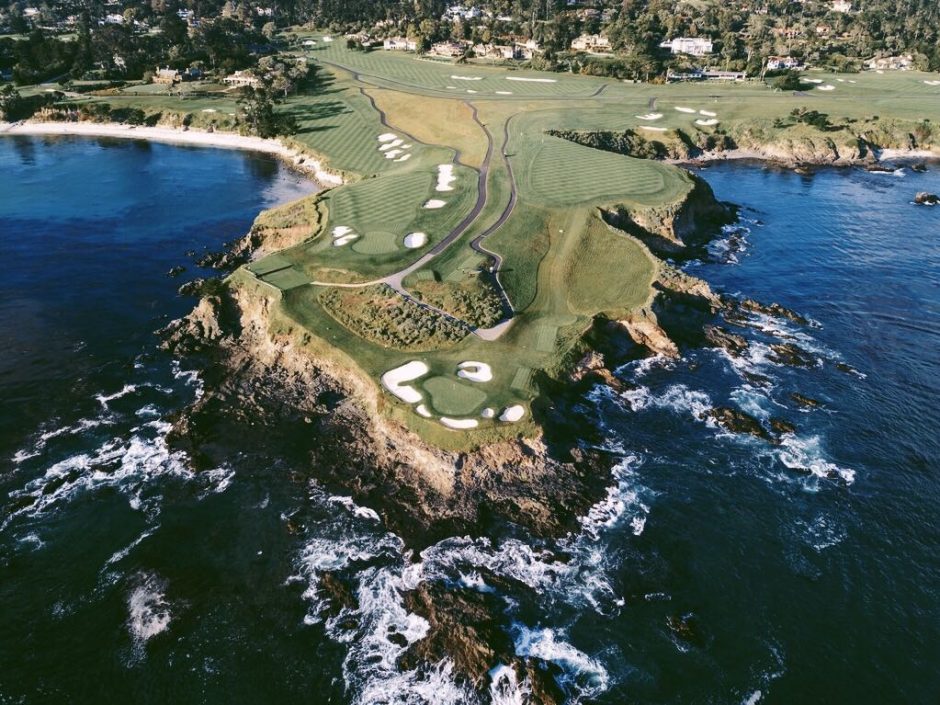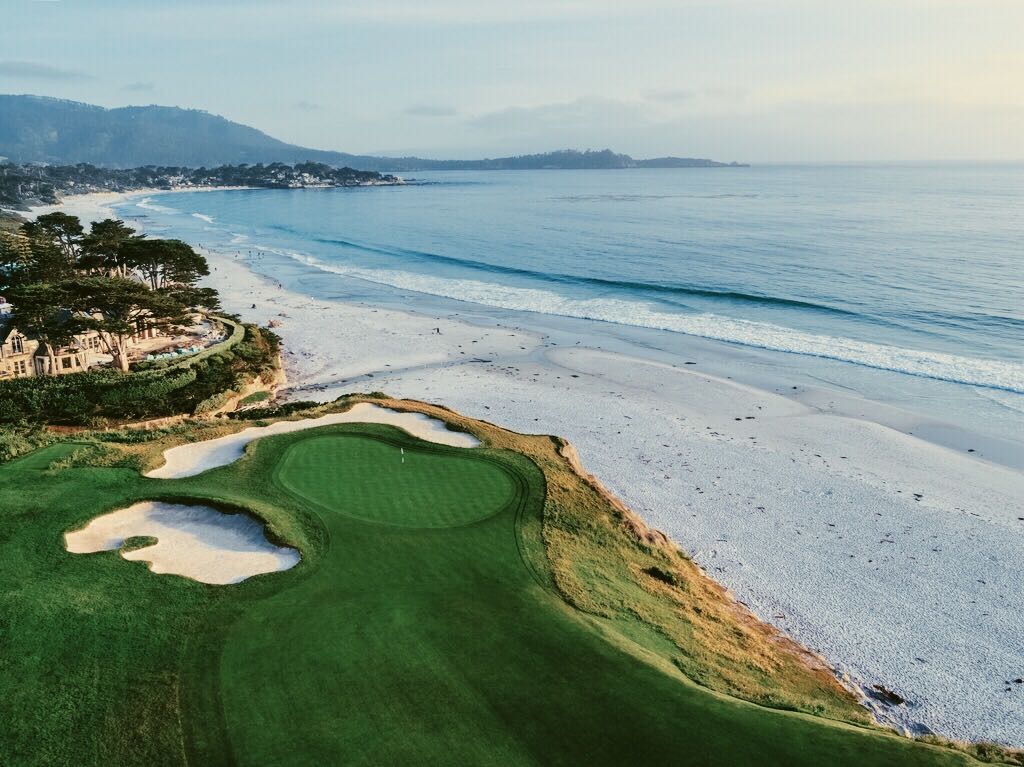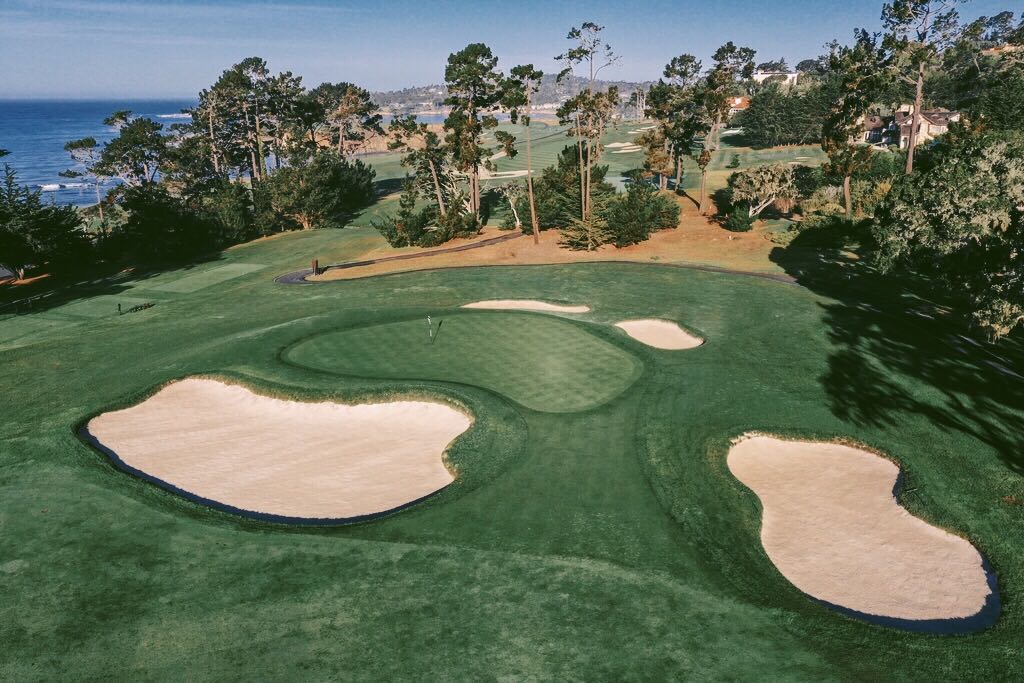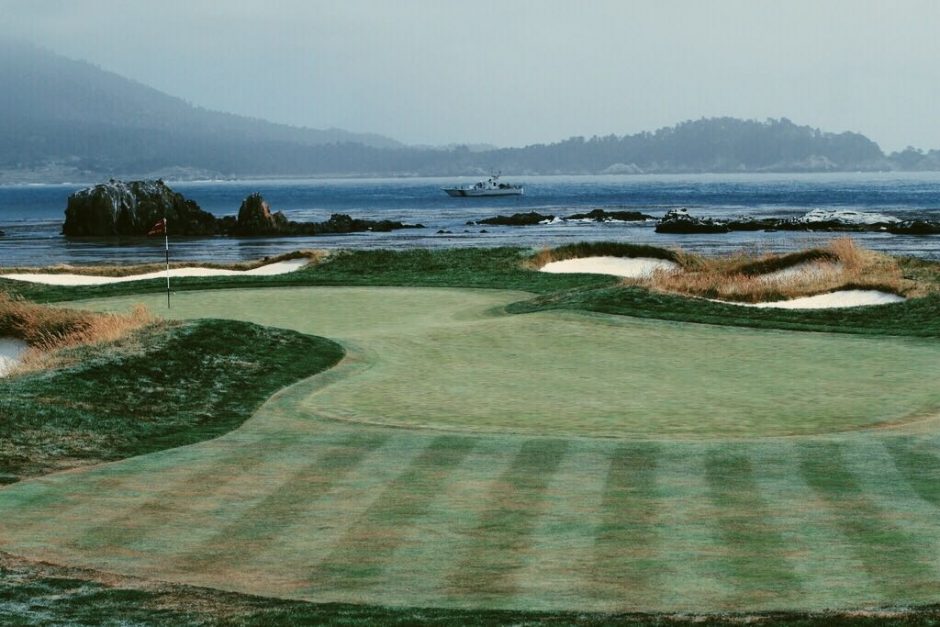Predicting the Toughest Holes at the 2019 U.S. Open
Which hole will play the toughest at the 2019 U.S. Open?
We asked John Bodenhamer, the USGA’s Senior Managing Director of Championships. He advised that the setup will mirror what players saw in 2010. So will the course play the same, nine years later?
“I think it depends on the weather, but I would expect that,” Bodenhamer said. “I think you look at Nos. 6-10 and that’s kind of the meat of the course, right on the cliffs with the wind kicking up.”
If you look at the top three toughest holes during the 2000 and 2010 U.S. Opens, the only one that shows up on both lists is No. 17 at Pebble Beach Golf Links.
But when you check out the AT&T Pebble Beach Pro-Am stats from February, No. 12 looks like one of the toughest par-3s in golf.

I think you look at Nos. 6-10 and that’s kind of the meat of the course
Tiger Woods actually previewed the entire course before playing the 2000 U.S. Open. But as the rest of the field learned that week – it’s easier said than done. Second place finished at 3-over par.
Woods, on the other hand, executed his advice flawlessly, posting a championship-record 12-under to win by a merciless 15 strokes.
Here are the top contenders for the toughest holes at this year’s U.S. Open:
No. 2 (516 Yards, Par-4)

The second hole is a true par 4.5 for the pros. During the AT&T, No. 2 is a reachable par 5 where par feels like a bogey. During the U.S. Open, the 502-yard hole is converted to a par-4. The scoring average was 4.46 in 2010, making it the second toughest hole. In short, it’s an easy par 5, and a brutal par-4.
No. 5 (195 Yards, Par-3)
The fifth hole has played as difficult as the fifth toughest par-3 on the PGA TOUR. It’s also one of only three holes Woods played over par (1-over) during his 2000 U.S. Open triumph. Even Jack Nicklaus, who designed the hole, dropped a shot here during his final U.S. Open in 2000.
No. 8 (428-Yards, Par-4)
It’s Nicklaus’ favorite par-4 in the world. It also was the second toughest hole at the 2000 U.S. Open.
“It’s the first real wake-up call to Pebble Beach. You’ve got to hit a good tee shot and from there, that second shot is one of the most daunting second shots in golf. I know one of the things that (caddie) Stevie Williams and I have, you hit that second shot and you don’t say a word. You don’t know whether to say “get up” or “get down.” It’s just up there forever. If you can walk away from there with four every day, boy, you’re going to pick up a couple shots on the field.”
Woods made three 4s and a 5. The scoring average was 4.534, netting Woods almost a stroke and a half on the field.

You hit that second shot and you don’t say a word. You don’t know whether to say ‘get up’ or ‘get down.’ It’s just up there forever.
No. 9 (526 Yards, Par-4)
This daredevil par-4 that rides along the coast like a rollercoaster caught the attention of Woods ahead of the 2000 U.S. Open:
“Either this hole or No. 10 is the toughest hole on the course. If the wind is blowing, they’re playing about the same. It’s such a tough driving hole. You have to draw the ball off the tee (to) keep it in the fairway. From there, you have one of the toughest greens to hit. Off a downhill, side-hill lie, to try to hit a long iron, it’s not easy.”
Woods was two shots better than the field on this hole in 2000, playing it in even par when the scoring average was 4.557 – the toughest of the tournament.
It’s tough to imagine it playing much easier in 2019. A new tee box stretches the hole to 526 yards, some 45 yards behind the blue tees.
No. 10 (495 Yards, Par-4)
It’s still a mighty tough hole during U.S. Opens – No. 4 in 2010 and No. 5 in 2000 – but No. 10 has ranked as high as the fourth most difficult par-4 on the PGA TOUR. And with split tees, it might be the toughest opening hole in all of golf.
The fairway tilts toward the ocean like a sinking ship, but it plays a reasonable 51 yards wide at its most forgiving midsection.

No. 12 (202 Yards, Par-3)
This under-the-radar par-3 had a scoring average of a whopping 3.39 in 2014, making it the hardest par-3 that didn’t host a Major. Including Majors? It slipped to No. 2. Only No. 12 at Augusta National managed to play tougher.
During the 2010 U.S. Open, the 12th green was the second toughest to hit, measuring just 23 paces deep.

No. 14 (580 Yards, Par-5)
Before the 2010 U.S. Open, Dustin Johnson’s caddie – and former Pebble Beach caddie – Bobby Brown predicted:
“Don’t be surprised to see a double-digit number.”
There were 14 “others” on No. 14 during the 2010 U.S. Open, or as many as the entire front nine combined. The severely undulated and shrinking green was rebuilt in the spring of 2016, although it now features a mischievous right hole location in front of a spiraling false front.
No. 17 (208 Yards, Par-3)
In the final round of the 2010 U.S. Open, there was just one birdie on the 17th hole – a hole-out from the bunker by Tim Clark.

If you make par, you know you’re probably going to pick up a couple of shots.